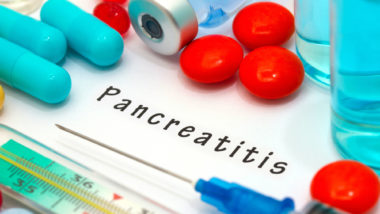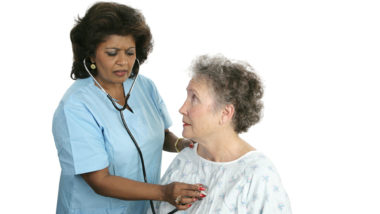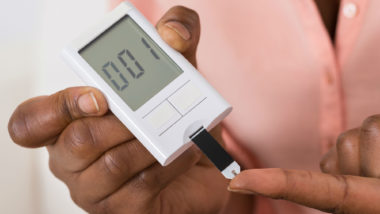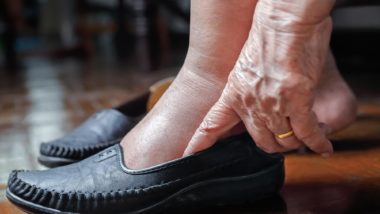Top Class Actions’s website and social media posts use affiliate links. If you make a purchase using such links, we may receive a commission, but it will not result in any additional charges to you. Please review our Affiliate Link Disclosure for more information.
The disease known as necrotizing fasciitis—known informally as “flesh-eating bacteria” infection—is a rare condition, but it is just as serious as it sounds. The earlier the treatment, the better, so it is important to seek medical attention as soon as you see the first signs of flesh-eating bacteria.
What exactly is necrotizing fasciitis?
Essentially, necrotizing fasciitis is an infection that begins in the tissues just under the surface of the skin. The word “fasciitis” comes from the name for the flat layers of tissue (fascia) that it affects, which separate layers of soft tissue like muscle and fat. Most often, the disease takes root in the arms, legs, and abdominal wall.
The condition is dangerous and even potentially deadly. Indeed, 30 to 40 percent of necrotizing fasciitis cases prove to be fatal.
What causes necrotizing fasciitis?
There are a variety of possible causes of necrotizing fasciitis. The most common cause is infection with the bacterium Streptococcus pyogenes, which belongs to a group of bacteria generally responsible for sore throat and skin infections. Usually, strep infections result in a mild illness at most, and many people who have been infected may not even show symptoms.
While it is rare that this bacterium causes a more serious illness, it can happen, resulting in conditions like toxic shock syndrome and necrotizing fasciitis.
Other bacteria have also been linked with flesh-eating bacteria, including Klebsiella, Clostridium, E. coli, Staphylococcus aureus, and others.
It’s not just bacteria that have been linked with this serious infection, however. Indeed, the U.S. Food and Drug Administration (FDA) warned last year that certain type-2 diabetes medications may also be capable of causing necrotizing fasciitis.

What is Fournier’s Gangrene?
Fournier’s Gangrene is a serious infection marked by flesh-eating bacteria attacking the thin skin near or in the genital area. While still very rare, the disease has become less rare with the onset of SGLT2 inhibitors being used.
Researchers found just 19 cases of the infection over the course of 35 years, leading up to 2013. Between March 2, 2013, and Jan. 31, 2019, researchers found 55 cases of Fournier’s Gangrene, and all of the patients had been taking SGLT2 inhibitors.
Of those 55 patients, 39 were men and 16 were women. The infections occurred at an average of 9 months after starting on an SGLT2 inhibitor.
SGLT2 inhibitors control blood sugar levels in patients with Type 2 diabetes. The medication works by redirecting excess sugar (glucose) from the bloodstream and eliminating it through the kidneys and out the urine.
Dr. Susan J. Bersoff-Matcha, M.D. and fellow researchers co-wrote the report, which was published in the May 6, 2019 issue of the Annals of Internal Medicine.
Dr. Bersoff-Matcha said in the report, “Although the risk for [Fournier’s Gangrene] is low, serious infection should be considered and weighed against the benefits of SGLT2 inhibitor therapy.”
Fournier’s Gangrene progresses rapidly. The first signs of flesh-eating bacteria in the genital region usually begin with other infection-related symptoms that include fatigue and fever. The genitalia, perineum (skin between the genitals and the anus) and perianal region may become swollen, red and warm to the touch, which will set this gangrene apart from another potential infection.
The report also said that complaints of intense pain that seem to contradict the level of visible trauma seem to be the best indication that flesh-eating bacteria should be considered as a diagnosis.
What are the first signs of flesh-eating bacteria?
If you suspect you may be at risk for developing one of these flesh-eating infections, there are a few things to look out for.
The first signs of flesh-eating bacteria include common symptoms like redness, swelling, and pain. Sometimes, the skin may develop blisters. You may find yourself experiencing flu-like symptoms, such as fever and nausea or vomiting.
It’s worth noting that the first signs of flesh-eating bacteria develop very rapidly—generally within the first 24 hours after the infection enters the wounded skin. Patients often describe the pain they experience in the affected area as more severe than they would expect from the wound itself, exacerbated by the infection.
After these initial symptoms appear, late symptoms can include the death of tissues in the affected area, which can cause scaling, discoloration, or peeling of the skin. This is more commonly known as gangrene. In some cases, affected limbs may need to be amputated.
Is Flesh-Eating Bacteria Becoming More Common?
According to the CDC, flesh-eating bacteria can occur anywhere and can infect people through a puncture in their skin.
Though still rare, researchers reportedly warned that flesh-eating bacteria has migrated into the warming waters of the Delaware Bay. WebMD says that five cases of flesh-eating bacteria were reported in 2017 and 2018, in contrast to one case reported in the previous eight years.
According to experts, flesh-eating bacteria and other diseases may be spreading due to warming caused by climate change. Flesh-eating bacteria tends to strike those with compromising conditions hardest, doctors told WebMD. These conditions include diabetes, as well as liver disease, kidney failure, or immune system problems.
A study published in the Annals of Internal Medicine documented the rise in cases. WLRN reported on the study and noted that the bacteria that cause necrotizing fasciitis often originate in the warm waters of the Gulf of Mexico. Researchers warned that those with diabetes or otherwise compromised immune systems should take precautions to avoid infection while swimming in the waters.
One expert told WLRN “people should use common sense before getting in the water, especially if they have a cut or an abrasion, or are immune-compromised.”
WLRN reports that, once someone is infected, the first signs of flesh-eating bacteria are swelling and blistering. The speed at which a patient can recover depends on how soon the infection is treated, so it is important to contact a health professional as soon as possible.
Can I file a lawsuit?
If you or someone you love has developed necrotizing fasciitis after exposure to an SGLT2 inhibitor, you may be able to file a lawsuit against the drug manufacturer and pursue compensation. Of course, filing a lawsuit cannot undo the pain and suffering caused by this serious infection, but it can at least help to alleviate the financial burden incurred by medical expenses, lost wages, and more.
Join a Free Diabetes Medications & Flesh-Eating Infection Lawsuit Investigation
The type-2 diabetes medications linked to the flesh-eating infection include:
- Invokana
- Invokamet/Invokamet XR
- Farxiga
- Xigduo XR
- Qtern
- Jardiance
- Glyxambi
- Synjardy/Synjardy XR
- Steglato
- Segluromet
- Steglujan
If you or a loved one took one of the type-2 diabetes medications listed above and suffered from a flesh-eating genital infection, you may qualify to join this diabetes medication lawsuit investigation. Fill out the FREE form on this page for more information.
ATTORNEY ADVERTISING
Top Class Actions is a Proud Member of the American Bar Association
LEGAL INFORMATION IS NOT LEGAL ADVICE
Top Class Actions Legal Statement
©2008 – 2024 Top Class Actions® LLC
Various Trademarks held by their respective owners
This website is not intended for viewing or usage by European Union citizens.
Get Help – It’s Free
Join a Free Diabetes Medications & Flesh-Eating Infection Lawsuit Investigation
If you qualify, an attorney will contact you to discuss the details of your potential case at no charge to you.
PLEASE NOTE: If you want to participate in this investigation, it is imperative that you reply to the law firm if they call or email you. Failing to do so may result in you not getting signed up as a client or getting you dropped as a client.
E-mail any problems with this form to:
Questions@TopClassActions.com.
Oops! We could not locate your form.













